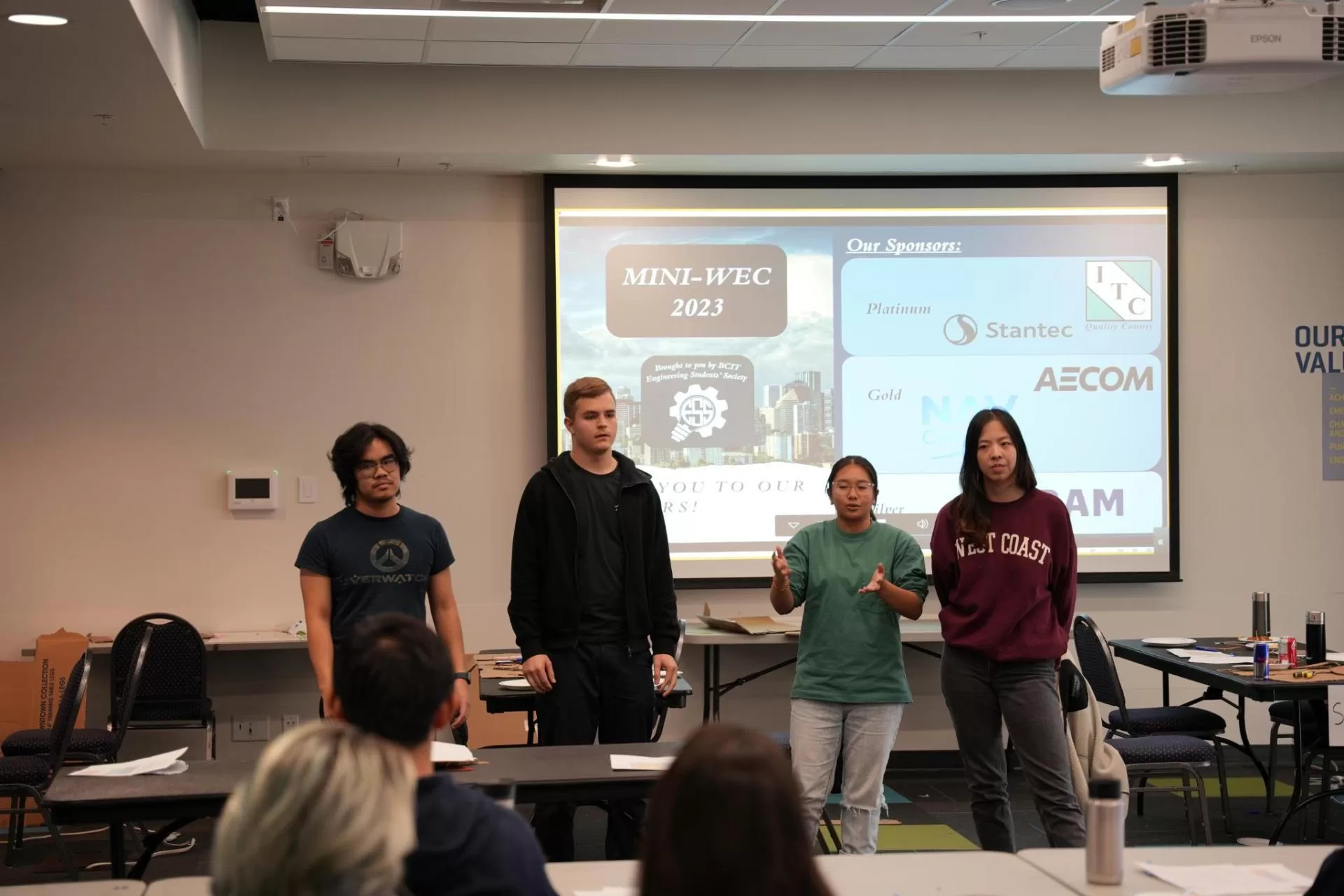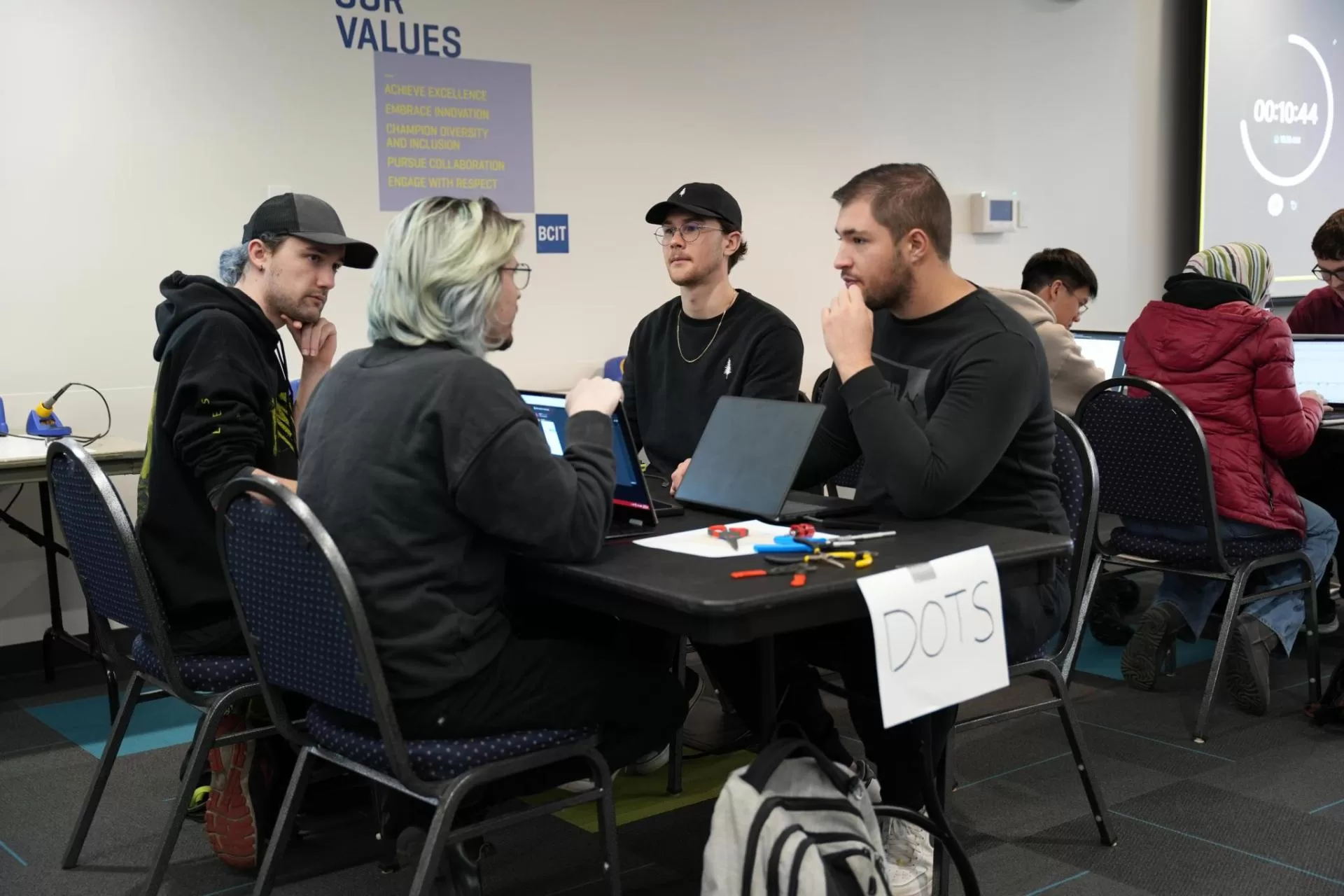COMPETING TEAMS

Team Frobenius
The innovative design team created the PCB factory, an all-in-one system that can produce a working Printed Circuit Board (PCB) pattern ready for attaching and soldering electrical components. By leveraging the proliferation of open-source desktop CNC architecture, a low-cost, easy-to-use solution to an otherwise tedious or expensive task is realized, enabling hobbyists and educators access to rapid custom printed circuit boards in minutes. A blank copper board is coated with an inexpensive masking material and loaded into the board mounting jig. The PCB pattern is converted to g-code using software such as FlatCAM or Fusion360 to provide the machine with movement instructions. Then, the PCB Factory removes the masking material to expose the pattern for the desired circuit. The board is then etched with a chemical etchant to remove the revealed copper, leaving behind the desired pattern. The engraving tool is removed and replaced with a drill bit before running the drilling g-code program, which rapidly drills all component holes necessary for their design. The integral design of the PCB factory automates all steps of the manual PCB fabrication process, providing rapid turn-around for custom designs for printed circuit boards. Tool-tip loads are minimized by machining only soft masking materials, and by incorporating the etching cycle in the machining steps, the coordinate axes are maintained throughout the process, preventing induced errors and simplifying the end-user experience.


Jr Design

Sinusoids
They were given a prompt to create a car-like transportation that could move around the town using the concept of wind energy. The solution that the team came up with was based on the principles of aerodynamics and surface area. The car was designed in the shape of a right triangle, which provided less resistance while moving forward. The orientation of the wheel and the car was determined by the budget and materials they had, which helped them stay within the maximum budget.



DOTS
The senior design team was tasked with creating a device capable of detecting ducks at the border of imagiland, even in the dark. To accomplish this, the team had to design a solution to see objects in darkness without a direct line of sight. They chose the Arduino Uno as the primary platform, along with a lidar sensor mounted on top of a servo motor that would scan the area in one direction. In addition, the team decided to use an LED matrix to accurately display the location and distance from the user to the object's location. A sound alarm is triggered when an object is detected, alerting the user.

RE-Engineering

The Democratic Republic of the Congo is a country in dire need of better healthcare access, especially in its less developed regions. One of the biggest challenges is the unacceptably long ambulance response times, which often result in patients suffering. To address this issue, a team of Engineers Without Borders fellows was tasked with developing an ambulance based on a readily available vehicle in the region, a 1980s-era Toyota Hilux pickup truck. .
The team had to work within certain constraints, using only materials that could be purchased or salvaged in the Congo, and ensuring that modifications could be made by semi-skilled workers using regular shop tools. They also had to consider factors such as affordability for local government entities with limited monetary resources, access to remote villages with poor roads, medical supplies appropriate to the region, adequate space for at least one paramedic to work with the patient, communications equipment that could operate in remote regions, and a robust design for the medical subsystem.

After much research and brainstorming, the team came up with a design that they believed would meet all of these requirements. They presented their solution to the judges, highlighting the key features of their ambulance design and explaining how it would address the challenges faced by healthcare providers in the region.
The judges were impressed with the team's innovative approach and the thoroughness of their research. They praised the team for their ability to work within the constraints of the project and come up with a solution that was both practical and effective. In the end, the team's hard work paid off, and they were awarded first place in the competition.
Schedule


Our Sponsors

As the BCIT Engineering Competition draws close, we extend our heartfelt gratitude to the incredible judges, dedicated volunteers, and generous sponsors who have made this year's competition possible. Your unwavering support has been the driving force behind the success of our students, enabling them to showcase their talents, innovation, and hard work.
